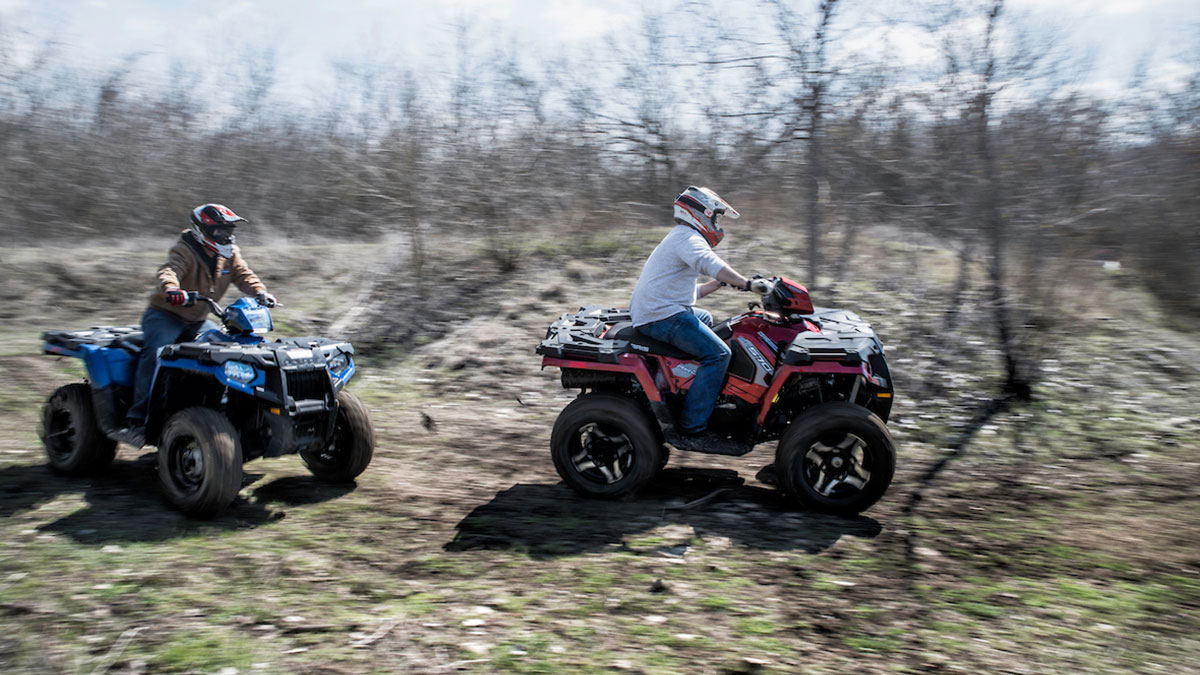Explore the Open Air with Our Leading ATV Adventures
Explore the Open Air with Our Leading ATV Adventures
Blog Article
ATV Riding Methods: Understanding the Art of Off-Roading

Body Positioning
To properly navigate via challenging off-road terrain, it is crucial for ATV cyclists to constantly maintain correct body positioning. Preserving the right body setting while riding an ATV not just boosts control and stability yet likewise makes certain the rider's safety. By embracing the correct body positioning strategies, bikers can effectively disperse their weight, enhance their balance, and reduce the risk of injuries or mishaps.
Positioning the feet on the foot pegs permits the motorcyclist to maintain security and control over the ATV. The cyclist's knees ought to be slightly curved, offering a slight suspension to maintain and take in shocks equilibrium.
In addition, the motorcyclist's eyes should constantly be focused ahead, checking the terrain and preparing for any barriers or changes in the path. By preserving an onward look, bikers can make instant choices and respond properly to challenging terrain.
Throttle Control
Building upon the relevance of correct body placing for ATV cyclists, understanding throttle control is an important skill that enables cyclists to successfully maneuver via various off-road surfaces. Throttle control describes the capability to regulate the quantity of power delivered to the ATV's engine. By recognizing how to adjust the throttle, bikers can make certain a smooth and regulated velocity, allowing them to browse obstacles with precision.
Among the essential facets of throttle control is discovering to regulate the throttle smoothly. Abrupt or jerky motions can create the ATV to shed traction or end up being unpredictable, making it challenging to keep control. Rather, riders must aim for gradual and deliberate throttle inputs, particularly when passing through tough surfaces. This method allows the ATV to keep a stable rate and gives far better traction, reducing the risk of crashes.
In addition to smooth modulation, motorcyclists must also find out just how to balance the throttle with other riding methods, such as body positioning and stopping. When climbing high hillsides, cyclists require to use sufficient throttle to preserve momentum without causing or overpowering the atv wheel spin. When coming down steep slopes, riders should make use of the throttle in mix with appropriate body link positioning and braking to preserve control and avoid the ATV from sliding or tipping over.

Braking Strategies
A necessary facet of ATV riding techniques is understanding effective stopping strategies. Understanding just how to brake correctly can make a substantial distinction in your security and control over the automobile when it comes to off-roading. One of one of the most vital stopping methods is making use of the front brake even more than the rear brake. The front brake provides most of the stopping power, so it is critical to use it judiciously. It is crucial to bear in mind that rough stopping with only the front brake can create the ATV to pitch forward, possibly leading to loss of control or even flipping over. Consequently, it is suggested to use both brakes at the same time, but with more stress on the front brake. One more crucial method is to avoid securing the wheels while stopping. Locking the wheels can cause skidding, making it hard to preserve control. To stop this, press the brake bars slowly and release them a little if you feel the wheels securing. By grasping these braking strategies, you can improve your ATV riding skills and make certain a satisfying and safe off-roading experience.
Cornering Techniques
One important element of grasping ATV riding strategies is recognizing effective cornering techniques. Catching on an ATV can be challenging, yet with the best strategies, bikers can browse turns safely and efficiently. The key to effective cornering is to maintain control of the ATV while making best use of grip and minimizing the danger of tipping over.
To execute a correct cornering method, cyclists need to approach the turn at a proper rate, ensuring they are not going as well slow or as this hyperlink well rapid. It is vital to change the body weight in the direction of the within of the turn, leaning into it to keep balance and stability. This aids to counterbalance the centrifugal pressure and maintains the ATV upright.
In addition, bikers should maintain their eyes concentrated on the learn this here now leave factor of the turn rather than the immediate path ahead (ATV). This permits smoother and extra precise steering, as it helps the rider anticipate any obstacles or changes in terrain
Additionally, proper throttle control plays a considerable function in cornering. Bikers need to modulate the throttle smoothly, staying clear of abrupt velocities or slowdowns, which can trigger loss of control.
Uphill and Downhill Riding
When browsing off-road surface, ATV cyclists have to understand the techniques for uphill and downhill riding to preserve control and guarantee security. Downhill riding, on the other hand, calls for cyclists to lean back and shift their weight towards the back of the ATV. By understanding the techniques for uphill and downhill riding, ATV bikers can with confidence deal with numerous off-road surfaces and enjoy a risk-free and electrifying adventure.
Final Thought
To conclude, understanding the art of ATV riding calls for a mix of body positioning, throttle control, stopping strategies, and effective cornering. Uphill and downhill riding also require particular skills to navigate securely. By carrying out these strategies, cyclists can boost their off-roading experience and boost their overall control and safety on the ATV.
ATV Riding Techniques: Grasping the Art of Off-Roading is a detailed guide that delves into the ins and outs of understanding the abilities needed for off-road ATV riding. Whether you are a newbie or a seasoned cyclist, ATV Riding Techniques: Understanding the Art of Off-Roading offers important recommendations to assist raise your off-road ATV riding abilities to the next level.

Report this page